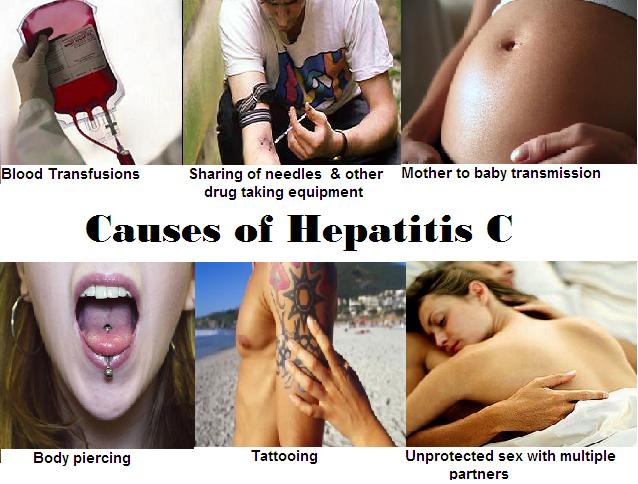Hepatitis C is a blood-borne disease. The main source of infection is from contact with the blood from an infected person.
Hepatitis C is a blood borne virus that is passed on via blood-to-blood contact. Most people don't show any symptoms at the time of infection and therefore won't realise they have been infected. If symptoms are experienced close to the time of infection it may be in the form of a short flu-like illness and also possibly jaundice (yellow skin).

- People have become infected by receiving blood transfusions or blood products (e.g. haemophiliacs and pregnant women treated with anti-d products), before adequate blood screening was introduced in 1991. There is no current risk as all blood and blood products in Northern Ireland are screened for all blood borne viruses.
- One high risk route of transmission is when people share needles, syringes and injecting drug paraphernalia. It is estimated that 85% of people who have ever injected drugs and shared works, even if only once, are hepatitis C positive. http://duit.ucsd.edu/video.html
- Tattooing, ear piercing or any invasive procedure where inadequate sterilisation occurred may put individuals at risk.
- Healthcare workers may be at risk through needle-stick injuries in their place of work.
- The risk of the virus being passed on through sexual contact is low and can vary between 0% and 2%.
- The is a low 5% risk that a mother could pass the virus on to her baby. Any baby born to a hepatitis C positive mother will have antibodies (fighter cells) to hepatitis C, as the baby protects itself with these in the womb, but this does not mean the virus is present. After 18 months it is possible to tell whether the child has the hepatitis C virus or only has the antibodies. Breast-feeding is thought to be safe provided bleeding does not occur if nipples are cracked.
- Other risks are sharing straws when snorting cocaine, or through the sharing of household items such as razors and toothbrushes.
- There are some people who have become infected and are never sure of where/how they got it.
Note:
The virus is not passed on during normal social contact, such as holding hands, hugging, or sharing food, cups or crockery.
Summary of Hep C Facts
- It is a blood borne virus
- It affects the liver
- It can be spread through sharing injecting equipment
- Never share toothbrushes, razors or other personal items
- It can survive in blood outside the body
- 1 in 4 infected will clear the virus themselves
- There is treatment available which can help
- You can catch it more than once
Possible routes of Hep C infection
- Sharing injecting equipment
- Snorting sharing a tooter
- Tattooing without clean ink and needles
- Body Piercing without clean equipment
- Fighting / Biting
- Blood spillage
- Razors, toothbrushes
- Nail scissors/clippers
- Unsafe sex (sex without a condom especially where blood is present)

